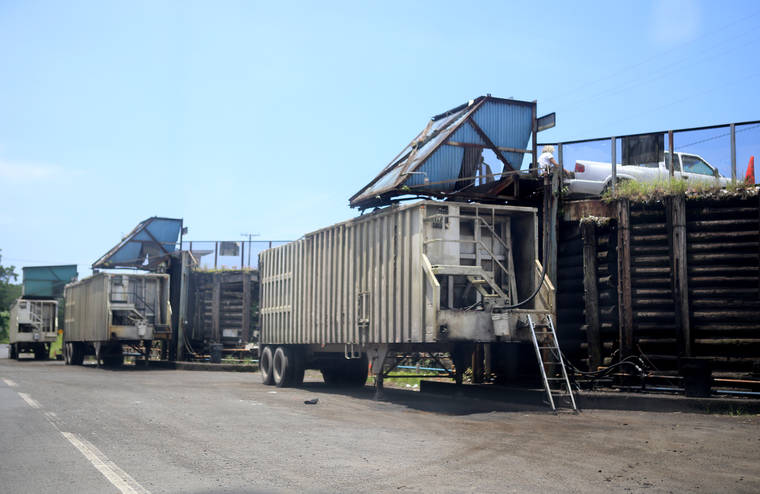HILO — Methane-powered buses were among several ideas bandied about Tuesday during a County Council committee meeting to discuss the county’s waste management programs.
The sole item on the agenda of the Committee on Agriculture, Water, Energy and Environmental Management was a resolution urging the directors of the departments of Environmental Management and Research and Development to develop better waste reduction strategies.
“Before we begin, I want to clarify: We’re not talking about an incinerator here,” said Councilman Tim Richards, who introduced the resolution.
The county has considered building an incinerator that would burn waste to generate power, but those plans were ultimately dropped after public outcry and the realization that such an incinerator would not be cost effective.
Instead, Riley Saito, deputy director for the Department of Research and Development, suggested removing biomass from county landfills, combining it with sewage sludge and using an anaerobic process to convert the mass into gas that could be used as fuel.
Saito said the decaying biomass at the West Hawaii Sanitary Landfill already produces about 270 cubic feet of methane gas per minute, which has to be burned off constantly to be consistent with environmental standards. That volume of gas, if harnessed, could be used to power 30 buses for 360 miles each, he said.
Saito said any effort to remove biological waste from the island’s waste stream would be beneficial. Half of the waste in the West Hawaii landfill is biological, he said, and the landfill will be at capacity in 100 years at the current rate of waste production. Removing biological waste will extend the lifespan of the landfill and slow the accelerating production of gas as biowaste decays.
“This is about what we’re going to do with our county in 100 years,” Richards said.
Greg Goodale, chief of the Department of Environmental Management’s Solid Waste Division, said Tuesday’s discussion was “timely,” as it coincided with the department’s regular discussion about how to improve its practices.
Environmental Management’s recycling coordinator, George Hayducsko, said disruptions in the Asian recycling industry have caused difficulties in recycling plastics on Hawaii Island, but suggested that plastic waste could be used to improve the county’s roads, as composites of plastic and asphalt appear to make superior roads than conventional asphalt roadways.
Ultimately, the discussion will continue at a future committee meeting before it can move to the full council, as many council members thought the resolution is too vague to be of much use in its current state.
Email Michael Brestovansky at mbrestovansky@hawaiitribune-herald.com.



